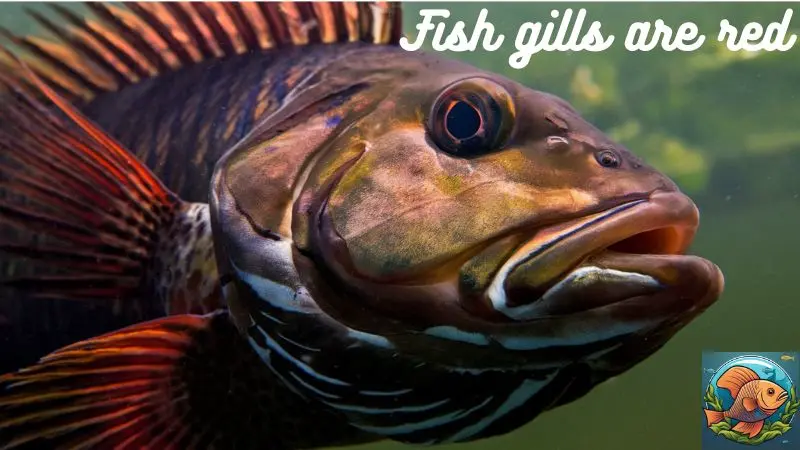marine life blog
Fish gills are red
The vibrant red hue of fish gills is a common sight for anyone who has ever observed a fish closely. This striking color, often contrasting with the surrounding environment, is not merely a decorative element but a testament to the intricate biological processes occurring within these delicate structures. The redness of fish gills is a direct consequence of the presence of a vital protein—hemoglobin—which plays a crucial role in the fish’s respiration. This essay of fishtankmagic.com will delve into the fascinating world of fish gills, exploring the reasons behind their red coloration and the underlying physiological mechanisms that make this color so significant.
The Role of Gills in Respiration
Before understanding why fish gills are red, it’s essential to grasp their fundamental function in the aquatic world. Fish, unlike terrestrial animals, obtain oxygen from the water surrounding them. This process, known as aquatic respiration, relies on specialized organs called gills. Gills are highly vascularized structures, meaning they are richly supplied with blood vessels. These vessels are responsible for transporting oxygen from the water into the bloodstream and carbon dioxide from the blood into the water.
The gills are typically located on either side of the fish’s head, often concealed within protective flaps called opercula. They consist of thin, filamentous structures called gill filaments, which are further divided into smaller, finger-like projections called lamellae. This intricate structure maximizes the surface area available for gas exchange.
The Importance of Hemoglobin
The key player in the red coloration of fish gills is hemoglobin, a protein found within red blood cells. Hemoglobin is responsible for transporting oxygen throughout the body. It contains a molecule called heme, which is composed of iron and a porphyrin ring. Iron has a remarkable ability to bind to oxygen molecules, forming a complex called oxyhemoglobin. This complex gives red blood cells, and consequently, the blood itself, a characteristic red color.
When blood flows through the gills, it encounters a high concentration of dissolved oxygen in the water. Hemoglobin readily binds to this oxygen, forming oxyhemoglobin. As the blood circulates throughout the body, the oxyhemoglobin releases the oxygen to tissues and organs that require it. The deoxygenated hemoglobin then returns to the gills, where it picks up more oxygen, completing the cycle.
The Significance of Red Coloration

The red color of fish gills is a direct consequence of the presence of hemoglobin-rich blood within the gill filaments. This coloration is not merely a visual phenomenon but a reflection of the active transport of oxygen taking place. The bright red hue indicates that the blood within the gills is highly oxygenated, signifying efficient gas exchange and a healthy respiratory system.
However, the red color of fish gills can also provide clues about the fish’s health and environment. For example, if the gills appear pale or anemic, it could indicate a lack of oxygen or a deficiency in red blood cells. Similarly, if the gills are abnormally red or swollen, it could suggest inflammation or infection.
Factors Influencing Gill Coloration
Several factors can influence the intensity of the red coloration in fish gills. These include:
- Species: Different fish species have varying levels of hemoglobin in their blood, leading to variations in gill coloration. For example, some species, like salmon, have a particularly vibrant red coloration due to their high hemoglobin content.
- Oxygen Levels: The concentration of dissolved oxygen in the water can affect gill coloration. In environments with low oxygen levels, the gills may appear paler due to reduced oxygen binding to hemoglobin.
- Temperature: Water temperature can also influence gill coloration. In colder waters, the blood flow may be slower, leading to a less intense red color.
- Stress: Stressful conditions, such as overcrowding or poor water quality, can affect gill coloration. Stressed fish may exhibit paler gills due to changes in blood flow and oxygen levels.
Adaptations for Efficient Gas Exchange
The red coloration of fish gills is a testament to the remarkable adaptations that have evolved to facilitate efficient gas exchange in aquatic environments. These adaptations include:
- Large Surface Area: The highly branched structure of gill filaments and lamellae provides a vast surface area for oxygen uptake and carbon dioxide release.
- Countercurrent Flow: The flow of water over the gills is in the opposite direction to the flow of blood within the filaments. This countercurrent exchange system ensures that the blood is constantly exposed to water with a higher oxygen concentration, maximizing oxygen uptake.
- Thin Epithelium: The thin layer of tissue separating the blood from the water allows for rapid diffusion of gases.
- High Blood Flow: The rich blood supply to the gills ensures a constant supply of oxygenated blood to the body.
The Importance of Gill Health
The health of fish gills is crucial for their survival. Damaged or diseased gills can impair their ability to extract oxygen from the water, leading to respiratory distress and even death. Factors that can negatively impact gill health include:
- Water Pollution: Pollutants in the water can damage gill tissue, reducing their efficiency.
- Parasites: Parasites can attach to the gills, interfering with gas exchange.
- Disease: Bacterial and fungal infections can affect gill function.
Conclusion: A Vital Component of Aquatic Life
The red coloration of fish gills is a striking reminder of the intricate biological processes that underpin life in aquatic environments. This vibrant hue is a direct consequence of the presence of hemoglobin, a protein crucial for oxygen transport. The efficient gas exchange facilitated by the gills is essential for the survival of fish, making them a vital component of the aquatic ecosystem. Understanding the reasons behind the red coloration of fish gills provides valuable insights into the physiological mechanisms that enable life in water. It also highlights the importance of maintaining healthy aquatic environments to ensure the well-being of these fascinating creatures.












